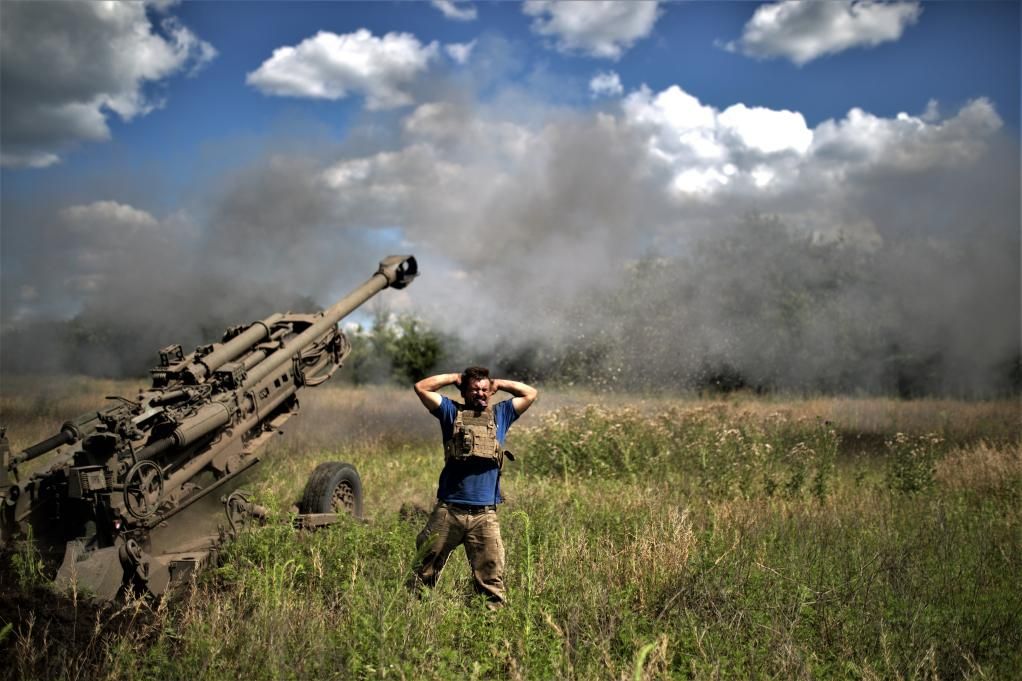Ukrainian 'Opening Salvo': A Crucial Struggle for Zaporizhzhia Region Rages On

The most recent phase in Ukraine’s counteroffensive against heavily fortified Russian lines in the southeast of the country may herald the onset of a more expansive confrontation. The current clash, involving thousands of western-trained and armed Ukrainian reinforcements, particularly in the Zaporizhzhia region, has evoked comparisons to the epic Normandy landings during World War II.
These brutal battles are being waged despite the Ukrainians having to navigate vast minefields, bunkers, tank traps, intense artillery fire, and airstrikes. Nevertheless, certain advances have been noted south of Orikhiv town, according to military analysts and pro-war bloggers based in Moscow.
President Putin has acknowledged that the Zaporizhzhia region has seen a significant escalation in hostilities. Nevertheless, he praised the “heroic” Russian forces for holding their lines and destroying numerous Ukrainian tanks. On the other side, US Secretary of State Antony Blinken recognized the intense battle unfolding.
The Ukrainian forces, bolstered by approximately 100 armored vehicles including German-made Leopard tanks and American-made Bradley fighting vehicles, are making significant strides. The US-supplied cluster weapons are also reportedly instrumental in clearing Russian minefields and defensive positions. Ukrainian President Zelensky acknowledged that the Ukrainian army has had a successful day on the battlefield, though he didn't provide specifics.
General Sir Richard Barrons, the former head of the UK’s joint command, noted that Ukraine has committed a brigade of 3,000-5,000 troops and 40-80 vehicles in their attempt to penetrate Russian defenses. However, Barrons indicated that Ukraine has yet to fully deploy its western tanks and armored vehicles. He further emphasized the criticality of this fight around Orikhiv as merely an “opening salvo” that has revealed the stretched Russian forces.
Ukraine's immediate objective is Tokmak, a Russian-held town approximately 20 miles south of Orikhiv. If Ukraine manages to reclaim Tokmak, the next target would be Melitopol, a coastal city known as the "gateway to Crimea." Securing Melitopol could potentially allow Ukraine to block Russia’s overland access to Crimea, which the Kremlin has controlled since 2014.
However, the Ukrainian counteroffensive has been hindered by wet weather. Nevertheless, western officials believe that a second wave of tanks and armored vehicles could breach Russian defensive lines. They are banking on Ukraine’s fresh brigades, recently rotated into the fight, to overcome Russian troops who are exhausted and weakened from prolonged combat.
Comparing this situation with the historic landing in northern France during World War II, Barrons mentioned that the Ukrainian success would depend on how quickly the Russian command could deploy their reserves, including their top-tier armored troops.
Two months into Ukraine's anticipated counteroffensive, the progress has been slower than expected. However, authorities in Kyiv remain confident, emphasizing that war is a complex process and not a predictable computer game. Simultaneously, they caution against underestimating Russia's power or morale.
The conflict’s ultimate outcome is far from certain. However, the stakes are clear: a strategic region is in play, with the very contours of the geopolitical landscape at risk of being redrawn. The world watches on as these formidable forces engage in a brutal dance of war, the echoes of which are likely to reverberate across history.



Comments ()